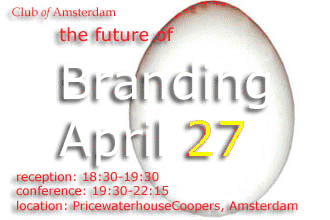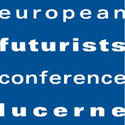
Sellers as Brand Ambassadors

Sharon Drew Morgen, President / Founder,
Morgen Facilitations, Inc.
I’ve been hearing a lot – and speaking a lot – about branding lately. While I originally believed that branding was a visual cue used to give a company market share and name recognition, I have come to understand that branding is really an announcement:
- Of the promise the company gives to differentiate itself;
- Of the story the company tells to validate the buying experience;
- Of the relationships the company is willing to create;
- Of the satisfaction that customers buy;
- Of the collaboration the company generates with their buyers;
- Of the mission the company is expressing;
- Of the expectation the company offers the buyers.
Great brands teach customers how to discover their own stories. Think about Harley-Davidson, or Nike.
But the one piece I didn’t fully understand until recently, the piece I want to pass on, is the relationship aspect of branding: branding is NOT about product, it’s about customer service. It’s about people. It’s about relationships.
Branding develops and maintains relationships; there is nothing else.
The most difficult aspect of branding is not in getting the packaging, or the story, right. It’s in bringing your brand throughout your company. If everyone in your company is not living your brand, you have no brand. When I recently called FedEx and got an unpleasant, unhelpful person on the phone and told him I would use UPS next time, and his response was “That’s your prerogative,” I knew that FedEx was not branded.
Every person – every single person – in your company must live with and breathe with your company brand EVEN IF THE REST OF THE WORLD DOESN’T KNOW YOU ARE BRANDED.
In my company, my brand is collaboration. We all live it, breathe it, and aspire to bring it to our customers while working hard on understanding what it means for us. Minutely.
And who is in the best position to bring your brand to the world? Your sales staff. They are they people who are the catalysts between your company and your prospects and customers. They are in the line of fire. They carry your promise, your product, and your values.
So, while you are spending all that time and money on creating good products, remember that we’ve shifted from a product focus to a customer focus. Products don’t matter; customers do.
Remember that your sales force are your brand ambassadors – not only for your customers and buyers, but as the pivotal function within your company to bring your brand into every department – and give them the tools they need to have your customers be able to answer the following question:
As my friend, BJ Cunningham says:
“What is your point? And why should I care?”
News about Branding

The Branding of China
By BusinessWeek
In October, Shelly Lazarus, chairman and CEO of Ogilvy & Mather, gathered together more than a dozen Chinese companies at the former estate of David Ogilvy in France to discuss branding. What did they learn? Beijing Bureau Chief Dexter Roberts and Asia Correspondent Frederik Balfour caught up with her at the annual BusinessWeek CEO Forum in Beijing to discuss the lessons that came out of the meeting. Here are excerpts of their talk:
Q: Do Chinese companies really understand what branding is?
A: You start with the desire — they think branding is important, and they want to understand what a brand is. But they don’t have any experience. If you haven’t grown up with brands it’s hard to understand them. There’s a lack of experience in what a brand is what it takes to build a brand.
Q: Do you think there are real Chinese brands?
A: Is Lenovo a brand? No. Is Haier a brand? No. They are brand names and aspire to be brands. But they have to understand that branding is about the relationship with people — both intellectually and emotionally. They have to have a consistent proposition they put in front of people. Yes, there are brands in China. But overseas, Chinese brands are just beginning in areas like consumer electronics.
Q: A lot of Chinese bosses don’t believe in consumer research. Is that an obstacle to their brand-building goals?
A: It’s crazy to spend any money until they figure out what lies in the heads and hearts of consumers.

A new high in mobile branding
Mobile virtual network operator Dutch PhoneMe is demonstrating true niche marketing by branding itself to appeal to cannabis users.
The branded service name is “PePtalk” (slogan: “Pep your Addiction”!) and the logo sports a hemp plant leaf. Strand Consult, which has been tracking the rise of MVNOs (a.k.a. “discount mobile operators”) in Europe, says the service is typical of sub-branded discount services in that it has a well-defined demographic target. Not only is cannabis legal in Holland, but around 675,000 people frequent the coffee shops that sell it. Strand is also upbeat about PePtalk’s chances of success. Branded discount mobile services have been enormously successful in markets like Denmark, where discount operators today account for 20% of the mobile market.
News about the Future

Arctic Gas Hydrate Research
Gas hydrates represent an enormous possible energy source in Arctic Canada. However, they also pose a hazard to conventional oil and gas exploration and possibly represent a significant source of greenhouse gas. At the present time however knowledge about distribution and stability of Arctic gas hydrates is sparse. This is highlighted by a number of hydrate-related blow outs over past years.
Permafrost researchers at the GSC are world leaders in Arctic gas hydrate studies, collecting the first intrapermafrost hydrate samples and developing, in collaboration with Russian co-workers, unique laboratory testing apparatus. In collaboration with the Japan National Oil Company (JNOC) and the US Geological Survey, the GSC is leading an international science program based on the first hydrate-dedicated hydrocarbon exploration well drilled in the Mackenzie Delta, NWT in early 1998. This project (JNOC/GSC Arctic Methane Hydrate Research Well Program) holds the potential for appraising the economic potential of Arctic gas hydrates and for learning first hand about the distribution of hydrates in nature. It will undoubtedly lead to better resource and hazard assessments and should have important impacts on Canadian energy and envionmental policy.

Mobile Three-Dimensional Computing
The emerging mobile 3D market will likely hit critical mass in the next year or two. Here’s what you need to know about this new market, software standards and hardware developments for the technology.
Three-dimensional (3D) computer technology has elbowed its way to a position of prominence over the past decade to emerge as a major force in the world of digital media. Thanks to its incredible adoption rate within the computer game industry, and an increasing presence on the World Wide Web, 3D is now pervasive on traditional computing devices. In much the same way that 3D is taken for granted by users of desktops, laptops and dedicated game consoles, the mobile computing industry is poised to experience a similar revolution.
Although the hardware and software technologies that make mobile 3D possible are currently between five and 10 years behind traditional 3D in terms of overall capabilities, the mobile 3D market is maturing between two and three times faster than its predecessor and is on track to reach critical mass in the next year or two. Specifically, a new generation of hardware-accelerated mobile devices will soon be joined by a suite of emerging 3D software standards that gives developers the ability to create interactive content and applications that haven’t been possible before.
Next Event: Wednesday, April 27

the future of Branding
Wednesday, April 27, 2005
reception: 18:30-19:30, conference: 19:30-22:15
location: PricewaterhouseCoopers, Prins Bernhardplein 200, Amsterdam [next to Amstelstation], free parking.
Goos Geursen: Branding is something we did in flatland
Colby Stuart: The Evolution of Branding
Moderated by Sjirk van der Goot
Vision 20/20
The Vision 20/20 project final report is available
By the Australian Communications Authority
Vision 20/20 was a foresight project, designed to develop a greater understanding about the future of communications and the consequences for regulation. Following on from the preliminary report released in August 2004, the final report:
- provides a holistic framework to examine the future strategic landscape
- identifies the best possible outcomes and pre-conditions
- covers the emerging IP-based architecture, digital content and convergent business models in more depth
- provides a more substantive assessment of the issues related to digital participation
- places current regulatory assumptions under more scrutiny and
- provides possible direction on strategic action.
The project has been a collaborative project, with approximately 200 people in Australia and internationally having participated through interviews, workshops and discussion. The ACA hopes the report will contribute to strategic thinking and discussion about future regulatory approaches within government, industry and the wider community.
Summit for the Future Report 2005

The Club of Amsterdam released the Summit for the Future Report. You can download it for FREE [190 pages, pdf, 2,77MB]:
https://clubofamsterdam.com/2020/10/27/summit-for-the-future-2005/
Recommended Book

The 22 Immutable Laws of Branding
by Al Ries, Laura Ries
As it becomes increasingly associated with impressive corporate gains realized in recent years by companies ranging from FedEx and Rolex to Starbucks and Volvo, “branding” has developed into one of the marketing world’s hottest concepts. And for good reason, contend well-known strategist Al Ries and his daughter Laura Ries in The 22 Immutable Laws of Branding: How to Build a Product or Service into a World-Class Brand.
“Marketing is building a brand in the mind of the prospect,” they write. “If you can build a powerful brand you will have a powerful marketing program. If you can’t, then all the advertising, fancy packaging, sales promotion and public relations in the world won’t help you achieve your objective.” A no-holds-barred look at a diverse collection of successful–and not-so-successful–branding efforts undertaken by these and other high-profile firms, their book distills the most critical principles involved into a series of clear rules with straightforward titles such as The Law of Expansion, The Law of Contraction, The Law of Consistency, and The Law of Mortality. While some of their suggestions may at first seem counterintuitive, together they compose a logical blueprint for success in today’s ever-more-competitive environment. – Howard Rothman
Future Tools for Growth
| European Futurists Conference Lucerne 10-12 July 2005 By Georges T. Roos, Futurist, Managing Director of European FuturistsConference Lucerne Foresight forms better decisions – this is a simple truth, yet not easy to achieve, since the future is hard to predict (or as Niels Bohr put it: “Prediction is difficult, especially about the future.”). The science of the future offers a variety of tools, starting from scenario techniques, trend analysis and extrapolation, all the way to strategic simulations and horizon scanning. The question is: How do we use these future tools to create a business gain? How do we use them to be a decisive step ahead of the competitors? In their search for reliable assumption concerning new business opportunities, new markets, and new policies I see many companies and organisations working hard to achieve a quantum jump in their foresight programmes. Most of them know that the answer to those challenges isn’t a simple prediction. Yet, it is imperative to better understand trends, challenges and possible disruptive changes – not tomorrow but today in respect to the impact of the decisions taken today on the times to come. Good foresight results from a combination of a profound understanding of its own business as well as a sophisticated future intelligence. It needs both: Futures experts, who have an advanced knowledge of methods and approaches for futuring, and decision makers, who fully understand the chances and limits of forecasting. Good decisions for the future are therefore dependent of a true dialogue between future experts and decision makers. The European Futurists Conference Lucerne in July 2005 (10-12) aims for both: Improving futures experts’ skills and improving the future literacy of decision makers. For that, some of the leading futurists (Patrick Dixon, Michael Jackson, Matthias Horx to mention only a few) and business leaders will share their insight and experiences in how to shape the future. |

Club of Amsterdam Agenda
| Club of Amsterdam Season 2004/2005 | |
| .April 27, 2005 | the future of Branding |
| .June 1, 2005 | the future of Robotics |
| .June 29, 2005 | the future of Philosophy |

Club of Amsterdam Open Business Club
:






Customer Reviews
Thanks for submitting your comment!